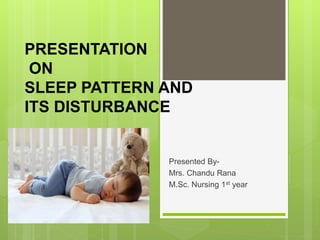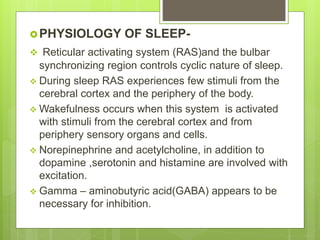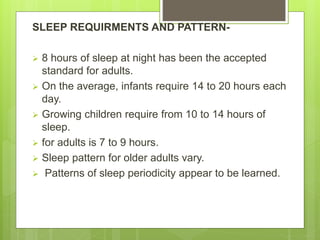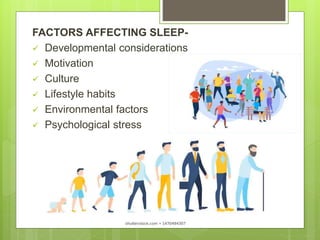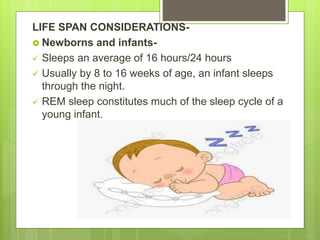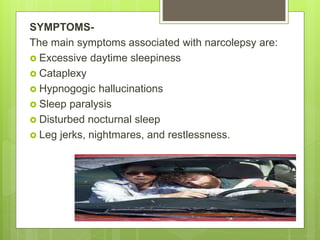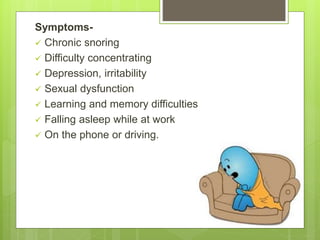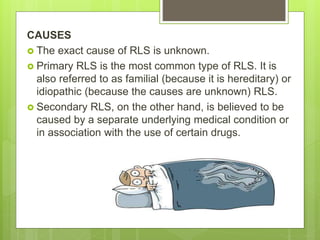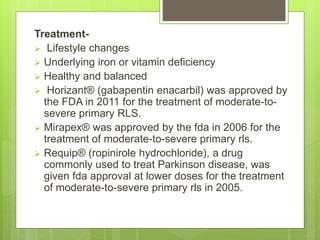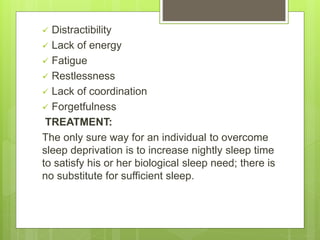The document provides information on sleep patterns and disturbances. It defines sleep and describes the physiology of sleep including the reticulating activating system and sleep stages. It discusses non-REM and REM sleep in detail. It also covers sleep requirements and patterns across the lifespan as well as common sleep disorders like insomnia, hypersomnia, narcolepsy, sleep apnea, restless leg syndrome, and sleep deprivation. Finally, it briefly mentions parasomnias.
